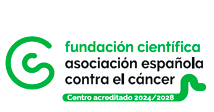
2020/11/03
CIC bioGUNE conducts an in-depth study of the mechanism of action of Men A vaccines used to curb meningococcal meningitis
The article, published in the journal of the United States Academy of Sciences, has succeeded in deducing the minimal polysaccharide fragment (epitope) that effectively binds to a bactericidal monoclonal antibody.
The work provides the framework for the design of new and improved vaccines and therapies.
(Bilbao, 3 November 2020). Research conducted by CIC bioGUNE - a member of the Basque Research & Technology Alliance BRTA - has succeeded in deducing the minimum polysaccharide fragment (epitope) that effectively binds to a bactericidal monoclonal antibody in the vaccines currently used to curb meningococcal meningitis. The study reveals the mechanism of action of the MenA vaccines currently used and lays the groundwork for the rational design of new and improved vaccines and therapies.
Meningococcal meningitis is a disease caused by the gram-negative bacteria Neisseria meningitidis, or meningococcus, one of the main causes of morbidity worldwide.
The study, published in Proceedings of the National Academy of Sciences of the United States of America (PNAS), the prestigious journal of the Academy of Sciences of the United States of America, has been conducted within the framework of the GlycoVAX project, funded by the European Union, and has involved, along with CIC bioGUNE, the GSK Vaccines Institute for Global Health in Siena (Italy) and the João Lobo Antunes Institute of Molecular Medicine in Lisbon (Portugal).
As Jesus Jimenez Barbero, Scientific Director at CIC bioGUNE and Ikerbasque Research Professor, explains: “Meningococci are classified into serogroups based on the chemical and antigenic structure of the polysaccharide capsule. Although thirteen different capsules have been described from the chemical and antigenic perspective, almost all cases of invasive disease are caused by one of the five serogroups A, B, C, W or Y, which are defined by the capsular polysaccharides specific to the meningococci”.
For years, many countries, especially in Africa, have been susceptible to devastating outbreaks of the disease, which has been attributed mostly to serogroup A (MenA). Very recently, vaccination with MenA capsule polysaccharide (CPS) glyconjugates has led to the almost complete elimination of clinical cases of MenA.
“To understand the molecular origin of the protection brought about by vaccines, a panel of polysaccharide fragments of different length was developed and their binding to different polyclonal and monoclonal antibodies was studied through a combination of X-ray crystallography methods and MRI, MMR, ELISA and human serum bactericidal assays, to demonstrate their degree of protection,” Jesus Jimenez Barbero further explains.
The research has succeeded in deducing the minimum fragment of polysaccharide (epitope) that effectively binds to a bactericidal monoclonal antibody, using current vaccines. In particular, it has been demonstrated that the binding epitope consists of three saccharide units, and that the presence of acetate groups is essential. The study paves the way for the design of new vaccines, using the minimum fragment of three units as the skeleton of the new vaccine.
About CIC bioGUNE
The Centre for Cooperative Research in Biosciences (CIC bioGUNE), located in the Bizkaia Technology Park, is a biomedical research organisation conducting cutting-edge research at the interface between structural, molecular and cell biology, with a particular focus on generating knowledge on the molecular bases of disease, for use in the development of new diagnostic methods and advanced therapies. CIC bioGUNE has been accredited as a “Severo Ochoa Centre of Excellence”, the highest level of recognition for centres of excellence in Spain.
About BRTA
The BRTA is an alliance made up of 4 collaborative research centres (CIC bioGUNE, CIC nanoGUNE, CIC biomaGUNE y CIC energiGUNE) and 12 technology centres (Azterlan, Azti, Ceit, Cidetec, Gaiker, Ideko, Ikerlan, Lortek, Neiker, Tecnalia, Tekniker y Vicometch), with the aim of developing advanced technological solutions for Basque companies.
With the support of the Basque Government, the SPRI Group and the Provincial Councils of the three regional provinces, the alliance seeks to promote collaboration among its centres, to strengthen the conditions to generate and transfer knowledge to companies, contributing to their competitiveness, and to spread Basque scientific and technological capacity.
BRTA has a staff of 3,500 professionals, accounts for 22% of the Basque Country’s R&D investment, generates an annual turnover of over EUR 300 million and files 100 European and international patents per year.
See a large version of the first picture





